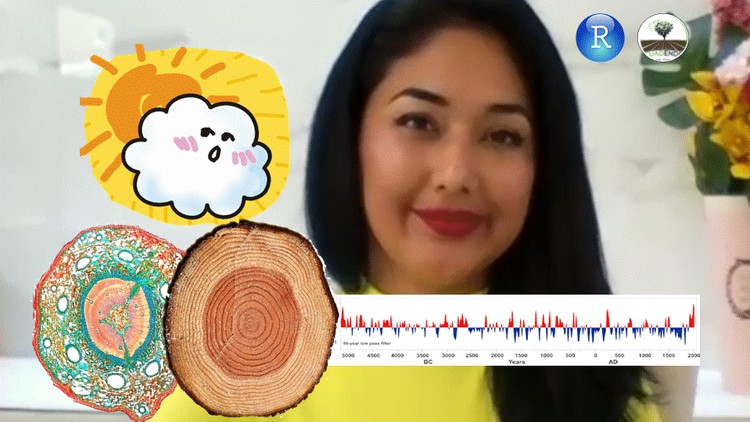
Dendroclimatology
What you will learn
Section 1. Dendrochronology, dendroclimatology, dendrohydrology, dendroecology, dendroglaciology and dendroarchaeology
Section 2. Sample collection and laboratory
Section 3. Wood anatomy (IAWA)
Section 4. Measurement and stereomicroscopes
Section 5. Construction of the tree chronology
Section 6. DplR package in R, detrending, sensitivity and Eps
Section 7. Chronology Metrics
Section 8. Dendroclimatological potential of the species
Section 9. Climate reconstruction package Treeclim in R
Section 10. Skill of chronology and correlation
Section 11. Statistical climate modelling in R
Description
Tree rings reveal effects of climate change
Rings in tree trunks offer a window into the depths of the climatic past to demonstrate how the climate of the last half century deviated far from historical norms dating back thousands of years. However, the rings in the tree trunks provide a much more complete historical picture of climatic variations. As trees age, they grow from the center outward, and each year a new circle of dead wood is created around the trunk of most trees. In that ring you can find information related to precipitation, temperature and other data for that year. Reading the weather stories these trees tell will help forecast what’s to come. “These data help build a more reliable model of climate change.” In the 1930s, A. E. Douglass, an astronomer who turned to trees to better understand the connection between sunspots and climate, founded the Tree Ring Research Laboratory at the University of Arizona, Tucson campus.
In this course you will learn how to perform a climate reconstruction from tree rings. Statistical packages will be used to help us build the master chronology through DplR and to know the correlation of climatic factors we will use the Treeclim package in R and finally we will model our climatic reconstruction in R.
Content